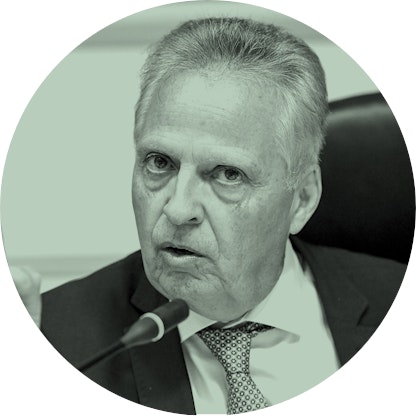The future of wind energy in the EU
The EU has long been a leader of the energy transition and is putting the policies, finance and research in place to ensure this continues, says Dominique Ristori, Director-General of DG Energy, European Commission
_Close dialogue between industry and local communities is vital to continue the broad support from European citizens for renewables energy policies, argues Dominique Ristori, Director-General of DG Energy, European Commission_
In the context of a successful implementation of the Paris climate agreement, the clean energy transition is a clear priority and renewable energy is one of its key drivers. The EU has a long history of leading by example in the clean energy transition and was the first region in the world to set an ambitious renewable energy target back in 2009. With a share of 17% in EU gross final consumption, renewables are now a mainstream technology. Renewables are also playing a growing role in the electricity sector, representing over 30% of the electricity produced in Europe. Wind power constitutes a large part of this growth. Around 10% of electricity demand in the EU is met by wind energy and this figure reaches higher levels in some member states, such as Denmark (37%), Ireland (27%) and Portugal (25%). The renewables sector in the EU represents more than 1.4 million jobs in 2016, and accounts for an annual turnover of €150 billion. Out of this, approximately 300 000 jobs are directly linked to the wind sector. Wind energy is an important part of Europe’s industrial base. The European wind industry has a 40% share of all the turbines sold globally and exports €8 billion a year in technology and services. These positive trends have been supported by ambitious EU policies as well as the rapidly decreasing costs of renewables. Indeed, onshore wind costs have dropped by 25% since 2010 and last year the EU demonstrated its leadership in the clean energy transition with offshore projects coming in with zero-subsidy bids and relying only on wholesale prices. Renewable energy and notably wind energy are becoming a cost competitive option and the Clean Energy for All Europeans package will unlock Europe's potential to become a world leader in renewable energy. This package puts forward the most advanced regulatory framework to modernise the energy system and lead the transformation towards a low-carbon economy. Agreements have recently been reached on the large majority of the package’s proposals. This includes agreement on a binding target at EU-level of at least 32% for renewable energy and an EU-level target of at least 32.5% in energy efficiency for 2030. Both targets include the possibility for a further upward revision in 2023. And to ensure the achievement of these objectives, a new robust governance system for the energy union has also recently been agreed. These targets pave the way for the EU to decarbonise its economy and will help boost the deployment of renewables. Indeed, the renewable energy target should result in a 55% share of renewable electricity in the power market by 2030, making renewables technology, and thus wind, an indispensable component of the EU’s energy mix. The International Energy Agency expects wind to become the number one source of power in Europe soon after 2030. It could meet nearly 30% of Europe’s power demand by 2030.
Regulation, research and innovation
The new Renewable Energy Directive will likewise strengthen the investment framework supporting the energy transition by providing predictability and stability, thus improving the prospects for wind. With regards to the National Energy and Climate Plans, which each European country must submit to show how they plan meet their energy transition and climate targets, a public consultation needs to be undertaken with key stakeholders, including the wind industry. In addition, the new electricity market design, that is currently being negotiated will modernise the electricity system, by improving its flexibility. It will thus facilitate the integration of the growing share of variable renewable energies. Beyond the regulatory framework, continued research and innovation remains central to maintain Europe’s leadership in renewables. In its strategic research and innovation agenda, the EU has also set up the European Technology Platform for Wind Energy, identifying the following main objectives: cost reductions, system integration, improving staff skills and reinforced European technological leadership. Another important element for future investment in renewables and wind is the EU budget for 2021-2027, which the Commission recently presented. If adopted as proposed, the budget will have an overall 25% climate mainstreaming target (up from 20% in the previous budget) and will contain new funding for clean energy policies. It will also include: €865 million to support regional cooperation in the deployment of renewables under the Connecting European Facility; a new €1 billion sub-programme on the energy transition within the LIFE environmental programme; up to €15 billion for climate, energy and mobility under Horizon Europe, the research and innovation facility; and €11.5 billion for sustainable infrastructure under the new InvestEU Fund. If we are to maintain broad support from European citizens for our policies on renewables in general, and for wind energy in particular, we will need to continue the close dialogue between the wind industry, local communities and citizens. The success of Europe’s clean energy transition depends on it. In this context, the Commission will soon present its global vision for a long-term decarbonisation strategy in accordance with the Paris agreement. A public consultation on this strategy is ongoing until 9 October and I invite all stakeholders to participate. This will be key for a successful decarbonisation and modernisation of the economy, where the EU wind energy industry has an important role to play.
This article is part of a series published by FORESIGHT Climate & Energy in the lead up to Global Wind Summit 2018, held from 25-28 September in Hamburg, Germany.
